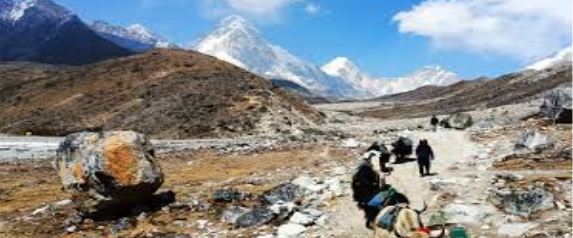The Everest Base Camp Trek guide hire is one of the most legendary and sought-after trekking adventures in the world. Set in the heart of Nepal’s Khumbu region, this iconic route draws thousands of trekkers each year, offering them the rare chance to stand face-to-face with Mount Everest (8,848.86 m), the tallest mountain on Earth. But the EBC Trek is more than just a journey to a geographical landmark—it’s an immersive cultural, spiritual, and natural experience.
Trekking Overview
The classic EBC trek starts with a scenic and thrilling flight from Kathmandu to Lukla, a small mountain airstrip nestled at 2,860 meters. From there, the trail weaves through vibrant Sherpa villages like Phakding, Namche Bazaar, Tengboche, and Dingboche, culminating at EBC Trek with Three High Pass (5,364 m). Many trekkers also ascend nearby Kala Patthar (5,545 m) for sunrise views of Everest and surrounding peaks like Lhotse, Nuptse, and Ama Dablam.
The trek typically takes 12–14 days round trip, including acclimatization days essential for adapting to the high altitude. While physically demanding, the trek does not require mountaineering skills, making it accessible to fit and well-prepared trekkers.
Culture and Spirituality
The Khumbu region is home to the Sherpa people, renowned for their mountaineering expertise and deep-rooted Buddhist traditions. Throughout the trek, travelers encounter intricately carved mani stones, prayer wheels, fluttering prayer flags, and ancient monasteries—most notably the Tengboche Monastery, one of the most sacred sites in the region.
Staying in local teahouses allows trekkers to experience Sherpa hospitality firsthand and gain insight into mountain life. Meals are simple but nourishing, with dal bhat (rice and lentils), momos, and yak cheese being staples of the diet.
Scenic and Natural Highlights
The Everest region is part of Sagarmatha National Park, a UNESCO World Heritage Site known for its dramatic landscapes and biodiversity. Towering Himalayan peaks dominate the skyline, while forests of pine, rhododendron, and juniper are home to Himalayan monals, musk deer, and even elusive snow leopards.
Trekkers witness a dramatic change in environment as they ascend: from lush valleys and roaring rivers to rocky glacial terrain near base camp. The trek is especially stunning in spring (March–May) and autumn (September–November), when the weather is stable and views are clear.
Logistics and Preparation
Permits required include a TIMS card and Sagarmatha National Park entry permit. Most trekkers hire a licensed guide and porter, both for safety and to support the local economy. While Lukla flights are the standard route in, some trekkers opt for longer trails starting from Jiri or Salleri.
Acclimatization is critical. Rest days in Namche Bazaar and Dingboche are standard to help avoid altitude sickness. Trekkers should train in advance and pack appropriately for cold, wind, and high-altitude conditions.
Conclusion
The Everest Base Camp Trek is more than just a physical challenge—it’s a profound journey through some of the world’s most awe-inspiring terrain and a deep dive into Sherpa culture and Himalayan spirituality. For those seeking a life-changing adventure in the shadow of the highest peak on Earth, EBC is the ultimate pilgrimage.

